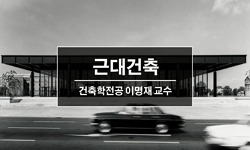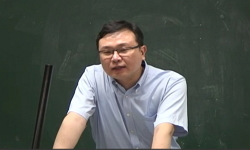Hunminjeongeum points to two things. One points to the Korean script, the other points to the book(Hunminjeongeum) that explained the Korean script(‘Hunminjeongeum’) in the 15th century. ‘Hunminjeongeum’ means “the correct sounds to instruct...
http://chineseinput.net/에서 pinyin(병음)방식으로 중국어를 변환할 수 있습니다.
변환된 중국어를 복사하여 사용하시면 됩니다.
- 中文 을 입력하시려면 zhongwen을 입력하시고 space를누르시면됩니다.
- 北京 을 입력하시려면 beijing을 입력하시고 space를 누르시면 됩니다.

[기획논문_'번역'과 '사이공간'] 『훈민정음』 '서문'의 두 가지 번역 : 15세기와 20세기 = Two translations of Hunminjeongeum Preface - 15th century and 20th century
한글로보기부가정보
다국어 초록 (Multilingual Abstract)
now it has been known ‘Hunminjeongeum’ was created by King Sejong(4th King of Joseon Dynasty) for his people, the spirit of independence, and creative spirit.
In this study, I noted that such an interpretation comes from the translation of Hunminjeongeum preface. So, I analyzed the historical background of the 15th century at first.
And then I analyzed the translation done in the 15th century for the Hunminjeongeum preface and compared it with that of the 20th century . Thus I found the truth that it was misinterpreted in the 20th century.
It is due to be interpreted the text of the 15th century with the vocabulary that represents modern concept, such as ‘national’, ‘public’, ‘indefendence’. And there are many possibilities that were involved in the vision of the modern ideology. Therefore, I checked the errors in the translation done in the 20th century and tried to find the reason of it. And it is the study that was based on the comprehension for Hunminjeongeum preface of the 15th century.
Hunminjeongeum points to two things. One points to the Korean script, the other points to the book(Hunminjeongeum) that explained the Korean script(‘Hunminjeongeum’) in the 15th century. ‘Hunminjeongeum’ means “the correct sounds to instruct the people”. So until
now it has been known ‘Hunminjeongeum’ was created by King Sejong(4th King of Joseon Dynasty) for his people, the spirit of independence, and creative spirit.
In this study, I noted that such an interpretation comes from the translation of Hunminjeongeum preface. So, I analyzed the historical background of the 15th century at first.
And then I analyzed the translation done in the 15th century for the Hunminjeongeum preface and compared it with that of the 20th century . Thus I found the truth that it was misinterpreted in the 20th century.
It is due to be interpreted the text of the 15th century with the vocabulary that represents modern concept, such as ‘national’, ‘public’, ‘indefendence’. And there are many possibilities that were involved in the vision of the modern ideology. Therefore, I checked the errors in the translation done in the 20th century and tried to find the reason of it. And it is the study that was based on the comprehension for Hunminjeongeum preface of the 15th century.
국문 초록 (Abstract)
‘훈민정음’이 창제된 15세기와 ‘훈민정음’이 새롭게 조명되기 시작한 19세기말~20세기 초는 비슷하기도 하고 또 다르기도 하다. 문명전환의 시점이라는 점에서, 그리고 새로운 제도나 가치관의 정립이 필요한 시기였다는 점에서는 비슷했고, 그것의 대응방식이나 세계관이나 가치관에서는 달랐다. 그런데 20세기에 와서 ‘훈민정음’은 ‘국민의 교화’, ‘국어의 표기’로서 인정받으며, ‘자주, 애민, 창조 정신’의 결정체로 평가받았다. 그런데 근대적 가치를 함의하고 있는 ‘국가’, ‘국민’, ‘자주’ 등의 개념으로 15세기의 ‘훈민정음’을 평가하는 것은 근대적 이데올로기의 시각이 개입될 가능성이 많을 수밖에 없다. 따라서 이 연구에서는 15세기 창제 당시의 『훈민정음『 서문의 이해를 바탕으로 20세기 번역의 오류를 확인하고 그러한 오류가 생긴 원인에 대해 살펴보고자 한다.
이 연구에서는 기존의 문자 ‘훈민정음’에 대한 평가가 훈민정음의 창제 목적을 담고 있는 서문의 번역에서 왔음에 주목하고, 15세기 창제 당시의 『언해본 훈민정음『의 서문과 20세기 『...
이 연구에서는 기존의 문자 ‘훈민정음’에 대한 평가가 훈민정음의 창제 목적을 담고 있는 서문의 번역에서 왔음에 주목하고, 15세기 창제 당시의 『언해본 훈민정음『의 서문과 20세기 『훈민정음『 서문의 현대역을 비교 분석하고자 한다. 그러한 분석을 통해 20세기에 번역한 『훈민정음『서문에 오류가 있음을 확인한다.
‘훈민정음’이 창제된 15세기와 ‘훈민정음’이 새롭게 조명되기 시작한 19세기말~20세기 초는 비슷하기도 하고 또 다르기도 하다. 문명전환의 시점이라는 점에서, 그리고 새로운 제도나 가치관의 정립이 필요한 시기였다는 점에서는 비슷했고, 그것의 대응방식이나 세계관이나 가치관에서는 달랐다. 그런데 20세기에 와서 ‘훈민정음’은 ‘국민의 교화’, ‘국어의 표기’로서 인정받으며, ‘자주, 애민, 창조 정신’의 결정체로 평가받았다. 그런데 근대적 가치를 함의하고 있는 ‘국가’, ‘국민’, ‘자주’ 등의 개념으로 15세기의 ‘훈민정음’을 평가하는 것은 근대적 이데올로기의 시각이 개입될 가능성이 많을 수밖에 없다. 따라서 이 연구에서는 15세기 창제 당시의 『훈민정음『 서문의 이해를 바탕으로 20세기 번역의 오류를 확인하고 그러한 오류가 생긴 원인에 대해 살펴보고자 한다.
동일학술지(권/호) 다른 논문
-
[논문] EFL 학습자의 어휘학습 전략과 연어 능력에 관한 연구
- 부산대학교 인문학연구소
- 김미영
- 2011
- KCI등재
-
- 부산대학교 인문학연구소
- 김상봉
- 2011
- KCI등재
-
[기획논문_'번역'과 '사이공간'] 번역과 '사이공간'의 세 차원
- 부산대학교 인문학연구소
- 이현우
- 2011
- KCI등재
-
[기획논문_'번역'과 '사이공간'] 『산수격몽요결(刪修擊蒙要訣)』 연구
- 부산대학교 인문학연구소
- 임상석
- 2011
- KCI등재




 RISS
RISS DBpia
DBpia







